Thursday, Sept. 24, 2015
Spin transport in 2D crystals and in elemental semiconductors with multivalley band structure
Hanan Dery, University of RochesterGroup theory is a powerful tool to investigate spin-dependent transport and optical properties. It allows one to identify important processes and to define the physics with a minimal set of material dependent parameters.

In the first part of the talk, I will present our recent findings for the spin transport in 2D membranes including monolayer transition-metal dichalogonides and graphene [1]. I will focus on spin flips induced by flexural phonons (Fig. 1), and show that the spin relaxation is ultrafast for electrons in freestanding membranes while being mitigated in supported membranes. This behavior is universal in 2D membranes that respect mirror symmetry and it leads to a counterintuitive inverse relation between mobility and spin relaxation.
In the second part of the talk, I will discuss the spin relaxation in elemental semiconductors such as Si and Ge [2-4]. Taking into account the multivalley nature of their conduction bands and using basic symmetry arguments, it is shown that the dominant spin-flip process is governed by electron scattering between valleys that cannot be connected by time-reversal opeation. For the case of heavily doped silicon, I will show how the spin-flip amplitude is dominated by short-range scattering off the central-cell potential of impurities after which the electron is transferred to a valley on a different axis in k space (Fig. 2).
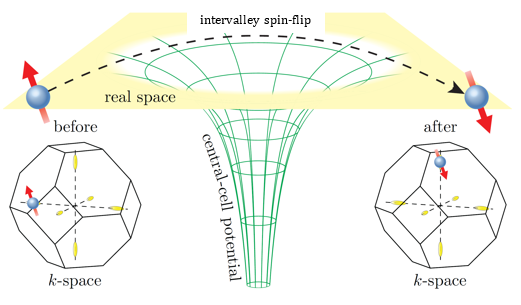
From the physical insights gained from the theory, we provide guidelines to significantly enhance the spin lifetime in semiconductor spintronics devices.
References:
- Yang Song and Hanan Dery, Transport Theory of Monolayer Transition-Metal Dichalcogenides through Symmetry, Phys. Rev. Lett. 111, 026601 (2013).
- Pengke Li and Hanan Dery, Spin-Orbit Symmetries of Conduction Electrons in Silicon, Phys. Rev. Lett. 107, 107203 (2011).
- Pengke Li, Jing Li, Lan Qing, Hanan Dery, and Ian Appelbaum, Anisotropy-Driven Spin Relaxation in Germanium, Phys. Rev. Lett. 111, 257204 (2013).
- Yang Song, Oleg Chalaev, and Hanan Dery, Donor-Driven Spin Relaxation in Multivalley Semiconductors, Phys. Rev. Lett. 113, 167201 (2014).
Return to the 2015-2016 Colloquia Schedule
Thursday, Oct. 15, 2015
Location: Nebraska Champions Club, 1520 R. St.
High Energy Physics at the Large Hadron Collider and the ATLAS Experiment
Flera Rizatdinova, Oklahoma State UniversityProf. Rizatdinova will discuss the journey of particle physicists, who are trying to discover what the fundamental building blocks of the Universe are and how they interact with each other. Recent results from the ATLAS experiment at CERN’s Large hadron Collider on the Higgs boson discovery and searches for new physics will be highlighted. She will give an overview of her own research in the ATLAS experiment and describe the role of some female scientists in particle physics.
Return to the 2015-2016 Colloquia ScheduleThursday, Nov. 5, 2015
Measuring the mass of the top quark
Benjamin Stieger, University of Nebraska–LincolnThe mass of the top quark—the only colored state to decay before forming stable hadrons and the altogether heaviest known particle—presents an important benchmark to test the self-consistency of the standard model of particle physics and a unique opportunity to study effects of non-perturbative quantum chronodynamics. The CMS experiment recently published a set of standard top-quark mass measurements using LHC proton-proton collision data at 8 TeV center-of-mass energy, reaching an unprecedented precision of less than 0.5 GeV. With the steady increase in experimental precision comes a theoretical challenge of interpreting the results and the motivation of using alternative methods. In this seminar, I will discuss the CMS set of analyses using the 8 TeV dataset, both with conventional methods and non-standard techniques. I will also give a brief outlook at possible future improvements in measurements of the top mass, the outcome of which might just determine the fate of our universe.
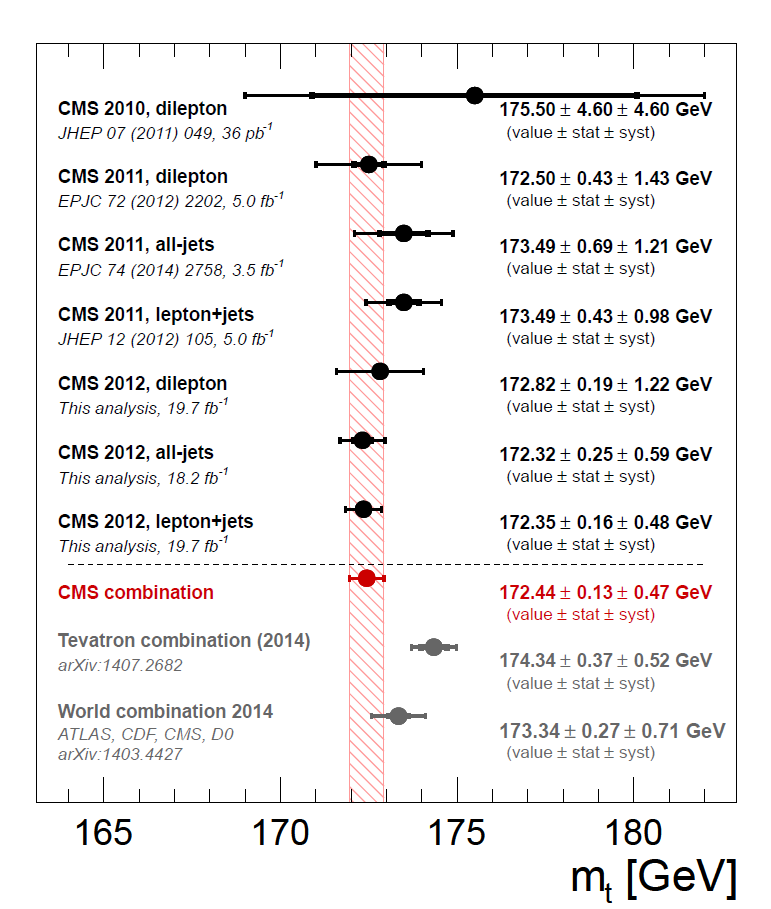
Benjamin Stieger did his undergrad and masters at ETH Zurich, and then continued with the PhD there under Felicitas Pauss, working on supersymmetry searches with leptons and a measurement of the ttbar+W/Z production rate. As a CERN Fellow during 2013-15 he continued working on searches with leptons, in the context of a single-top + Higgs analysis. In parallel, he started getting involved in top mass measurements, working on underlying event and b-fragmentation studies in ttbar events, and a mass measurement using tracker observables. He has been co-coordinator of the CMS top mass working group since July 2014. He joined the UNL CMS group in October 2015 and has started working on a search for ttbar+Higgs production using multilepton events.
Return to the 2015-2016 Colloquia ScheduleThursday, Nov. 12, 2015
Ultrafast Lattice Dynamics
David A. Reis, Stanford PULSE InstituteX-ray free-electron lasers (FEL) could revolutionize our understanding of dynamics of matter at the level of electrons and atoms. They produce extremely short pulses with minimal divergence and large pulse energy, resulting in a billion times the peak brightness of storage ring-based synchrotron sources. A challenge for scientists is to make effective use of the high-brightness, especially given that the machines are also very noisy with large shot-to-shot fluctuations. This may seem incompatible with high-resolution spectroscopy of elementary excitations in solids, nonetheless, I will make the case for using FELs to study lattice dynamics. I will draw on recent results form our group where we perform high-resolution inelastic x-ray scattering in the time-domain, using relatively broad-band pulses and without the use of an analyzer. Here we generate optically broad-band vibrational coherences spanning the Brillouin zone that are subsequently probed by the scattering of a time-delayed x-ray. I will discuss implications for studying energy conversion and transport both in and out of equilibrium.
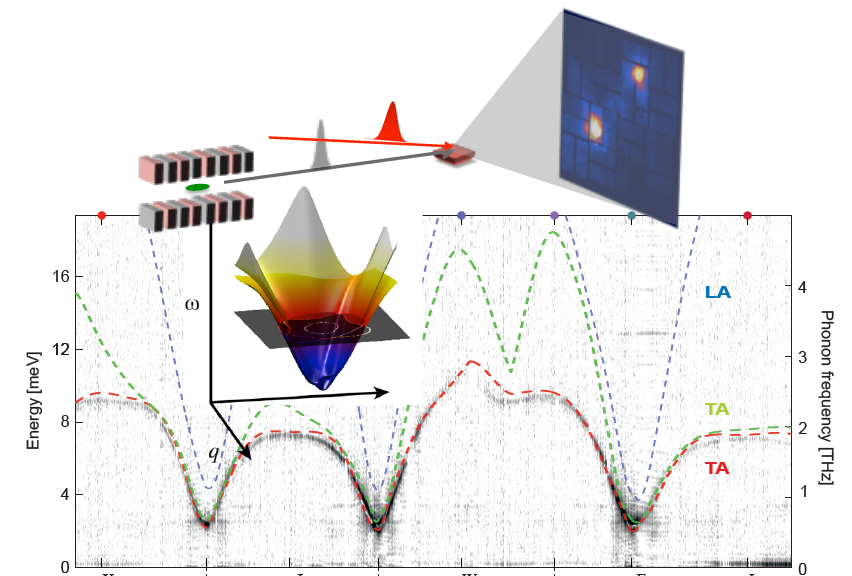
David Reis is an Associate Professor of Applied Physics at Photon Science at Stanford University and SLAC National Accelerator Laboratory. He was previously a post-doctoral fellow, assistant and then associate professor of Physics at the University of Michigan. His research interests are in ultrafast and strong-field light-matter interactions.
Thursday, Dec. 3, 2015
Materials at the nanoscale: from nanowires to biological cells
Bret Flanders, Kansas State UniversityNanoscale materials enable new phenomena to be investigated and new properties to be measured. Our group has developed a method for fabricating metallic nanowires that are being used to attain both of these goals. The single crystalline nanowires that we grow may be composed of a variety of different metals and grown between specified points in existing circuitry or, say, from the tip of a tungsten electrodes. We have recently achieved the growth of 60 nm diameter nanowires with lengths in excess of 100 μm (aspect ratio > 103). Such long branchless nanowires are needed for future studies of ultrafast electronic excitations in the wires under strong electric fields. Independently, we have applied these nanostructures to the investigation of adhesion by living biological cells. It has been essential in this study to fabricate instruments that are small enough to be interfaced with localized sites on individual cells. This capability has allowed us to determine the fundamental adhesive properties of the amoeboid cell D. discoideum. These properties include the cell-substrate adhesion energy, the bending modulus of the cellular membrane, and the interfacial tension of the membrane-medium interface. Our nanowire fabrication method and new results from both of these efforts will be discussed in this talk.
Return to the 2015-2016 Colloquia ScheduleThursday, Jan. 28, 2016
Spintronics with Ferroelectrics
Evgeny Tsymbal, University of Nebraska–LincolnSpintronics is relatively new research field promising revolutionize electronic and data storage industries. Involving the electron spin degree of freedom, in addition to charge, provides new functionalities not available in conventional semiconductor-based electronic devices. However, viable spintronics concepts, such as magnetic tunnel junctions, typically require application of magnetic fields or spin torques generated by large currents, consuming power and producing heat, hence limiting the application of such devices. To avoid the need for large currents, there have been recent efforts toward manipulating magnetization by the application of electric fields. Ferroelectric materials are especially helpful in this regard because they possess a spontaneous electric polarization switchable by an applied electric field. If such a ferroelectric is interfaced with a thin metallic ferromagnet it modifies the electronic and magnetic properties of the ferromagnet near the interface through effects of charge screening and interface bonding. Thus, ferroelectric materials may be employed in spintronics to control the spin-dependent properties including the interface magnetization, the interface magnetic order, the interface magnetic anisotropy, and the spin-dependent transmission across the interface. Furthermore, ferroelectric films can now be made thin enough to allow measurable electron tunneling while maintaining a stable and switchable polarization. Modeling and experiments show that ferroelectric tunnel junctions allow the control of the spin-polarization of the tunneling current. Starting from basic principles, this talk will overview recent research efforts in this field and discuss the underlying physical mechanisms associated with the effects of ferroelectricity on magnetism and spin transport.
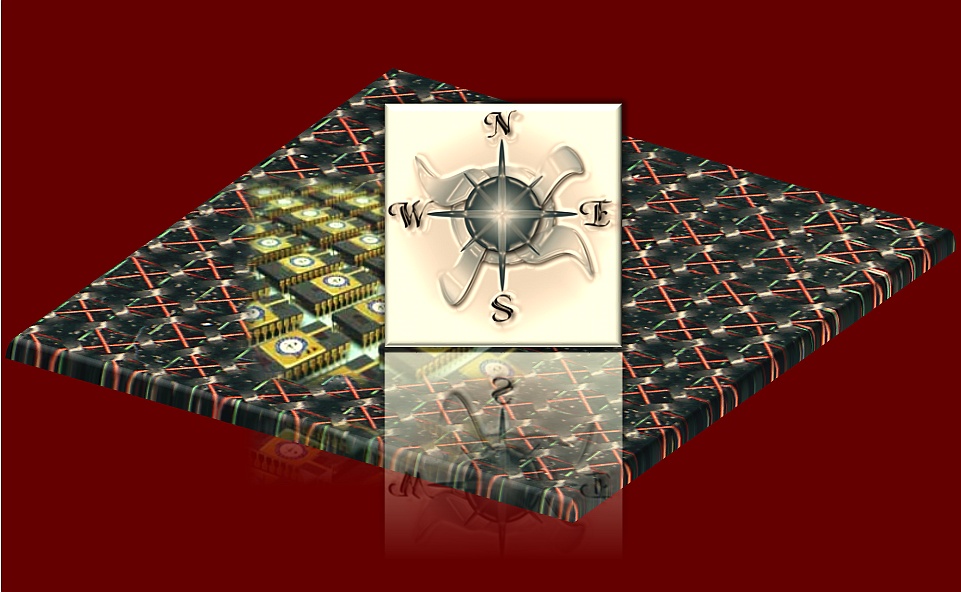
Thursday, Feb. 11, 2016
Etch-a-Sketch Nanoelectronics
Jeremy Levy, University of PittsburghElectronic confinement at nanoscale dimensions remains a central means of science and technology. I will describe a novel method for producing electronic nanostructures at the interface between two normally insulating oxides, LaAlO3 and SrTiO3. Conducting nanostructures are written, erased and reconfigured under ambient conditions at room temperature, similar to the operation of an etch-a-sketch toy. A wide variety of devices can be created, including nanowires, tunnel junctions, diodes, field-effect transistors, single-electron transistors, superconducting nanowires, and nanoscale THz emitters and detectors. After an introduction, I will focus on two recent results: the discovery of a novel phase in which electrons form pairs without becoming superconducting, and the discovery of electronically controlled ferromagnetism at room temperature. Both phenomena occur in the same family of LaAlO3/SrTiO3 heterointerfaces.
Dr. Jeremy Levy is a Distinguished Professor of Condensed Matter Physics at the University of Pittsburgh in the Department of Physics and Astronomy, and Director of the Pittsburgh Quantum Institute. He received an A.B. degree in physics from Harvard University in 1988, and a Ph.D. degree in physics from UC Santa Barbara in 1993. After a postdoctoral position at UC Santa Barbara, he joined the University of Pittsburgh in 1996. His research interests center around the emerging field of oxide nanoelectronics, experimental and theoretical realizations for quantum computation, semiconductor and oxide spintronics, quantum transport and nanoscale optics, and dynamical phenomena in oxide materials and films.
Dr. Levy is Director of the Pittsburgh Quantum Institute, the Center for Oxide-Semiconductor Materials for Quantum Computation, a Multidisciplinary University Research Initiative (MURI) on Quantum Preservation, Simulation and Transfer in Oxide Nanostructures, and a NSF Nanoelectronics for 2020 and Beyond program, and a Class of 2015 National Security Science and Engineering Faculty Fellow (NSSEFF). He is a Fellow of the American Physical Society, and is the recipient of the 2008 Nano50 Innovator Award, and the NSF Career Award. He has received the University of Pittsburgh’s Chancellor’s Distinguished awards for research (2004, 2011) and teaching (2007).
Return to the 2015-2016 Colloquia ScheduleThursday, Feb. 25, 2016
Resonance Terahertz Electrodynamics of Domain Walls in Thin Ferroelectric Films: Effect of Negative Capacitance
Igor A. Lukyanchuk, University of PicardiePolarization domains that alternate the surface charge distribution, first proposed by Landau (1935) and Kittel (1946) in contents of ferromagnetism can be formed in finite-size ferroelectrics as an effective mechanism to confine the depolarization field to the near-surface layer and diminish the depolarization energy. However their existence have long been considered as barely possible until recent direct theoretical predictions [1-3] and experimental evidences [4-5] in thin oxide films and superlattices.
We consider the ultra-high-frequency dynamics of few-nanometer wavelength periodic domain structure observed in PbTiO3/SrTiO3 superlattices [6]. The calculated frequency dependence of dynamical permittivity, ε(ω) of thin layer of PbTiO3 with domains exhibits striking feature: its real part is negative at low frequencies that is explained by the opposite orientation of the depolarizing field with respect to the field-induced averaged polarization, phenomenon known as "ferroelectric negative capacitance". However, in sub-THz region Re ε(ω) becomes positive, passing through 0 at ω =ωc~0.3-3THz.
The resulting collective oscillation mode is associated with domain-wall vibrations. It becomes active in the near-THz frequency region and can be excited and detected by methods of Reflection Absorption Spectrometry. The corresponding reflectivity ∆R/R~Im(1/ε(ω) reveals the clear resonance at ω ~ ωc for the THz beam, incident at the Brewster angle. This unique property makes ferroelectric films a promising candidate for compact and tunable devices working in the sub- and low THz range.
- A. M. Bratkovsky and A. P. Levanyuk, Phys. Rev. Lett. 84, 3177 (2000)
- V. A. Stephanovich, I. A. Luk'yanchuk, and M. G. Karkut, Phys. Rev. Lett. 94, 047601 (2005)
- I. A. Luk'yanchuk, L. Lahoche, and A.Sene, Phys. Rev. Lett. 102, 147601 (2009)
- S. K. Streifer, J. A. Eastman, D. D. Fong et. al., Phys. Rev. Lett. 89, 067601 (2002)
- P. Zubko, N. Stucki, C. Lichtensteiger, and J.-M. Triscone, Phys. Rev. Lett. 104, 187601 (2010)
- I. Lukyanchuk, A. Pakhomov. V. Sidorkin, and V. Vinokour, arXiv:1410.3124 (2014)
Thursday, March 10, 2016
Observation of quantum Griffiths singularity in 2D superconductors and detection of potential topological superconductivity in 3D Dirac semimetal
Jian Wang, Peking University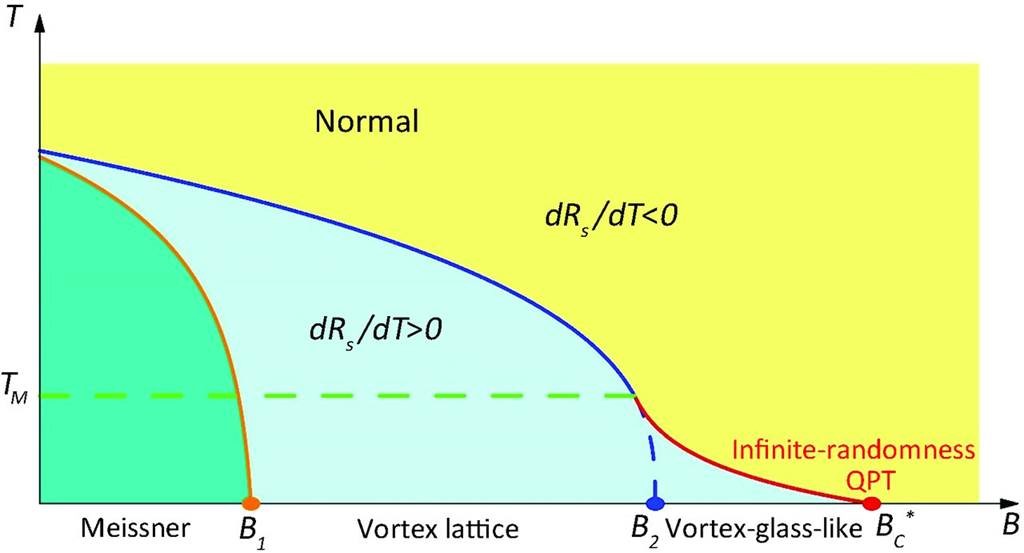
By both in situ scanning tunneling microscopy/spectroscopy and ex situ transport and magnetization measurements, we find that the two-atomic-layer Ga film with graphene-like structure on wide band-gap semiconductor GaN is superconducting with Tc up to 5.4 K. [1] Furthermore, in three-atomic-layer Ga films, we firstly observe quantum Griffiths singularity in two dimensional (2D) system and superconductors.[2] As for the superconductivity in topological materials, we detect the novel superconductivity in crystalline 3D Dirac semimetal Cd3As2 [3] by using point contact measurements with some signatures showing the possibility of topological superconductivity.[4]
References:
- Physical Review Letters 114, 107003 (2015) (Editors’ Suggestion)
- Science 350, 542 (2015) (with a perspective article: Science 350, 509)
- Physical Review X 5, 031037 (2015)
- Nature Materials 15, 38 (2016)
Thursday, April 14, 2016
The materials physics of complex oxides
Charles Ahn, Yale UniversityComplex oxide materials exhibit a tremendous diversity of behavior encompassing a range of functional properties, such as magnetism, ferroelectricity, multiferroicity, and superconductivity. As diverse as this behavior is, an even richer spectrum of possibilities becomes available if one starts to combine different complex oxides together with atomic-scale precision to create new artificially structured, heterogeneous systems. In these nanostructured materials, the atomic-scale interface of these systems can play a decisive role in determining the observed behavior, with new physical properties emerging. In this talk, we describe the electrostatic control of strongly correlated behavior, such as magnetism, the Mott metal-insulator transition, and orbital polarization, and we discuss the interplay between new interfacial structural motifs and functional behavior.
Charles Ahn received his B.A. degree from Harvard University and Ph.D. from Standard University. After working as a postdoctoral scholar at the University of Geneva, he joined the Department of Applied Physics at Yale University in 2000. He is currently the department chair and William K. Lanman Jr. Professor of Applied Physics, and the director of Yale MRSEC. Prof. Ahn is the Fellow of the American Physical Society, and the recipient of the AVS Peter Mark Memorial Award, the David and Lucile Packard Fellowship in Science and Engineering, and the Alfred P. Sloan Fellowship. His research focuses on the fabrication and the study of the physical properties of novel complex oxide materials using advanced growth and characterization techniques, including molecular beam epitaxy, scanning probe microscopy, and synchrotron x-ray scattering techniques.
Return to the 2015-2016 Colloquia ScheduleMonday, May 9, 2016
A Framework for Correlated Electrons in Solids
Mark van Schilfgaarde, King's College London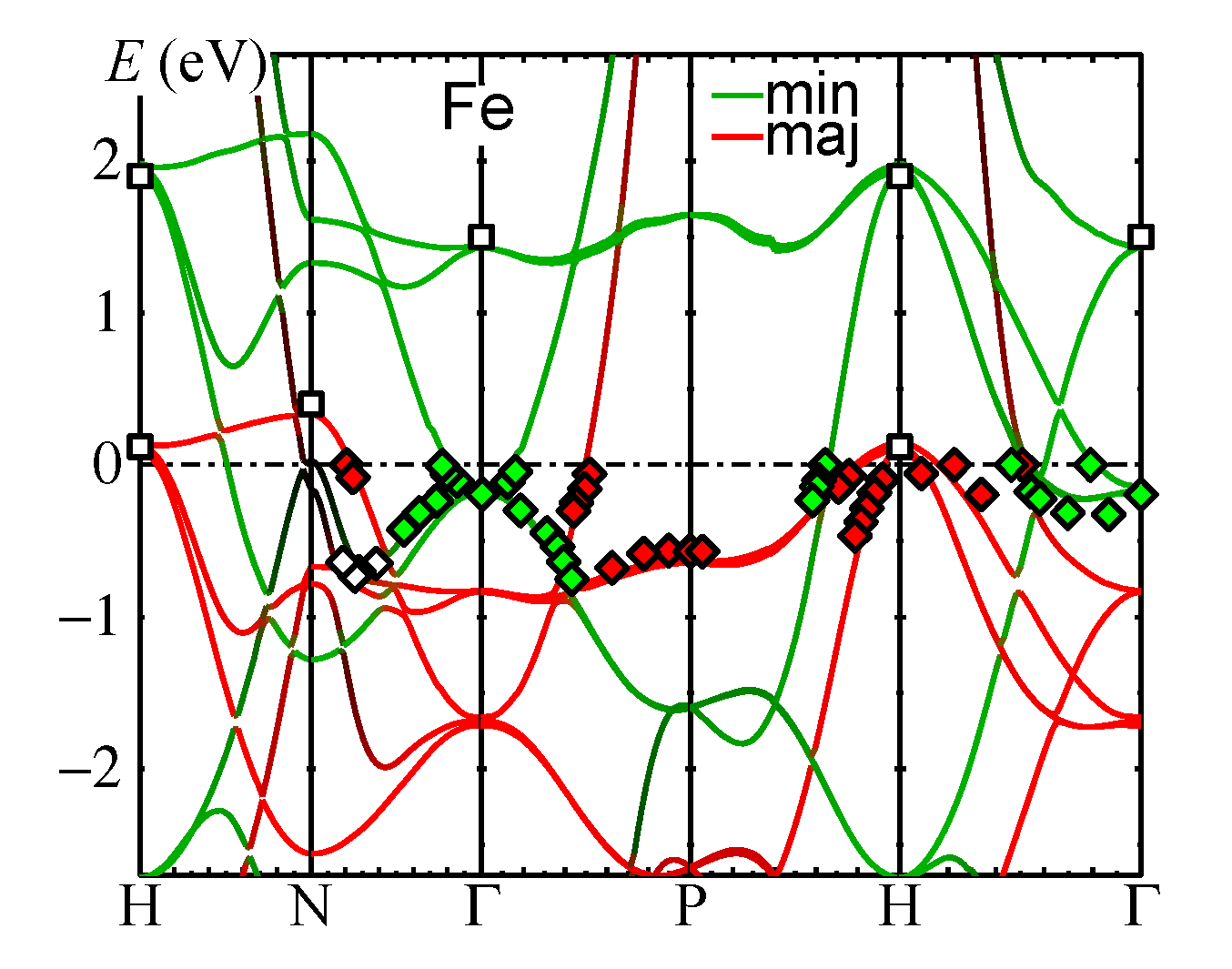
How electrons more and respond to fields is the key to understanding properties of materials at their most fundamental level. Solving the fundamental equations of quantum theory ab initio (without recourse to parameters or models) in a universal manner is extremely difficult, because electrons interact. By far the most popular methods are those based in density functional theory (DFT). They are used in almost every branch of science and engineering because they can successfully describe many kinds of materials and their properties. But DFT suffers from many well known limitations, and to overcome them a veritable zoo of quasi-ab initio extensions has evolved. But because DFT is in practice based on an ansatz, ambiguities are inevitable, making systematic improvements problematic.
An alternative approach is through Green's function methods where G, instead of the density n, is the basic variable. G contains more information and the approximations are easier to identify, albeit at greater cost. A very successful approach has been to construct G through perturbation theory, in powers of the screened coulomb interaction W. The simplest of these is the GW approximation. Ambiguity is present because there is freedom to choose the reference Green's function G0 which makes G and W. G0 can be chosen self-consistently, by minimizing the difference |G-G0|. At the GW level, this is called quasiparticle self-consistent GW, or QSGW.
QSGW turns out to be a rather good universal framework for describing excitations of weakly and moderately correlated systems. A few instances will be shown that highlight both its successes and limitations. QSGW works less well when correlations are strong, particularly when spin fluctuations are important. Dynamical Mean Field theory (DMFT) has long been a method designed to address strong, local correlations. We show how QSGW can be combined with DMFT, and present arguments that this combination includes most of the important elements missing from QSGW. Fe and Ni are used as illustrations.
Biography: Professor Mark van Schilfgaarde arrived in the United Kingdom in late 2011 to lead the Theory & Simulation of Condensed Matter Group at King's College London, leaving his position as Paul Galvin Professor at Arizona State University (ASU). Before ASU, he was a Researcher at Sandia National Labs. He completed his PhD at Stanford University in 1987. He is a Fellow of the American Physical Society and sits on the executive boards of the Simons Foundation and the Thomas Young Centre. Professor van Schilfgaarde has pioneered a number of major developments in electronic structure theory and their practical implementation. Dr. van Schilfgaarde is a co-author on approximately 200 papers. Since arriving in the UK he has been invited to speak at around 40 international workshops and conferences worldwide.
Return to the 2015-2016 Colloquia Schedule